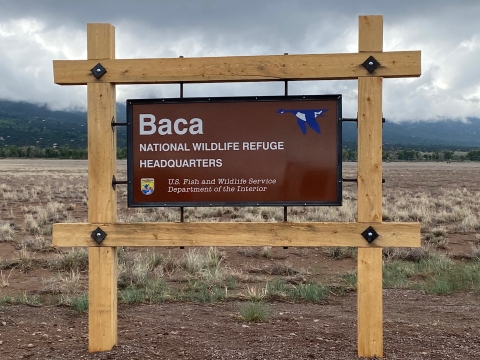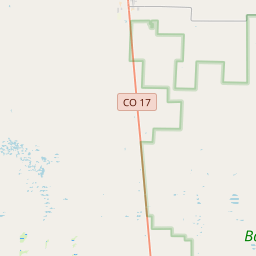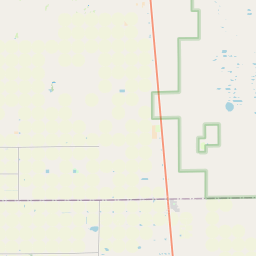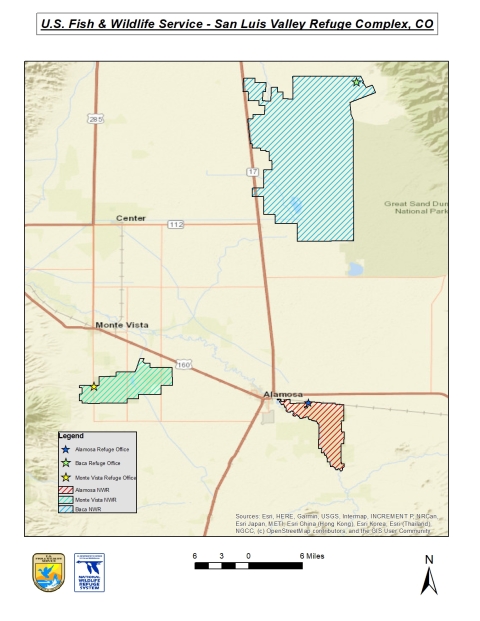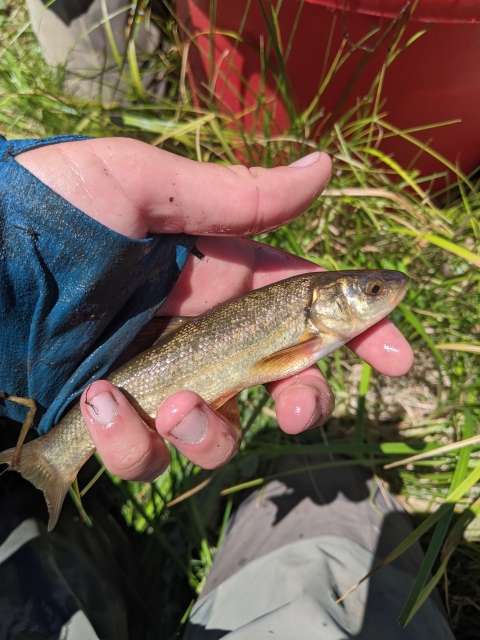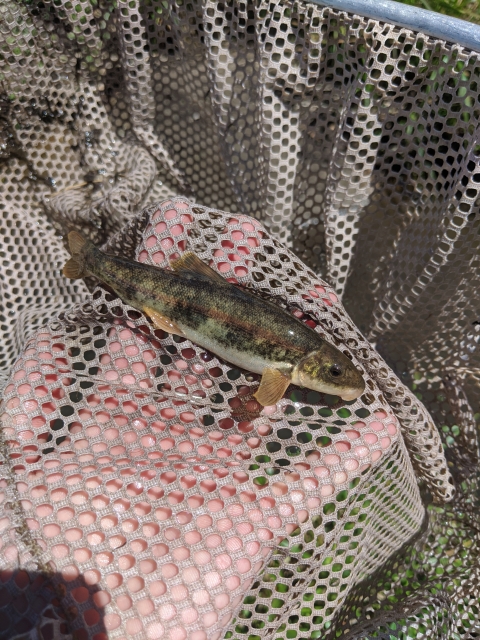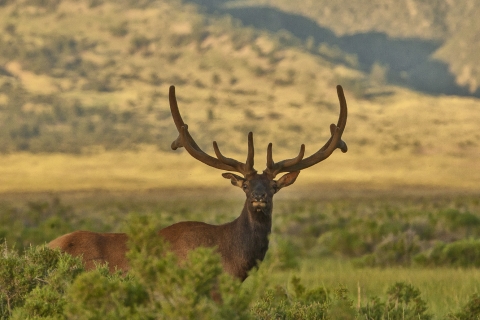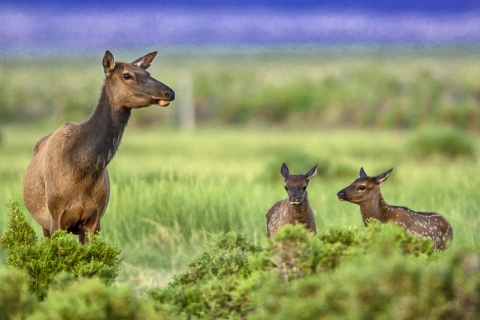Visit Us
The 93,000 acre Baca National Wildlife Refuge is located in the northeastern part of the San Luis Valley. The Refuge has a diverse combination of shrublands, grasslands, wet meadows, playa wetlands, and riparian riparian
Definition of riparian habitat or riparian areas.
Learn more about riparian corridors. This Refuge was set aside not only as a haven for migratory birds and resident wildlife, but also for its importance in a broader conservation effort to protect the wildlife, habitat, and water of the northern San Luis Valley. The Refuge also contains the rich archeological telling of over 12,000 years of use by humans, including the extensive history of the famed Baca Grant Ranch.
Driving Directions
The Baca NWR office is located approximately 10.5 miles east of Highway 17 on the south side of County Road T. The gate at the end of the driveway is between two large timbers, with "Luis Maria Baca Grant" in cast iron lettering above it.
Office Hours - Currently Closed
Baca Refuge Visitor Center Open Hours
Visitor Center Hours - Tuesday - Friday 8 a.m. - 3 p.m. (When Staffing Allows)
*** For more information, please contact the Baca Refuge at 719-256-5527.
Location and Contact Information
- Baca National Wildlife RefugeView Details69812 County Rd. T Crestone, CO 81131
About Us
About the Refuge
The 93,000 acre Baca National Wildlife Refuge is located in the northeastern part of the San Luis Valley. The Refuge has a diverse combination of shrublands, grasslands, wet meadows, playa wetlands, and riparian riparian
Definition of riparian habitat or riparian areas.
Learn more about riparian corridors. This Refuge was set aside not only as a haven for migratory birds and resident wildlife, but also for its importance in a broader conservation effort to protect the wildlife, habitat, and water of the northern San Luis Valley. The Refuge also contains rich archeological artifacts, telling of over 12,000 years of use by humans, including the extensive history of the famed Baca Grant Ranch.
The San Luis Valley, sitting at 7,800 feet, extends over 100 miles from north to south and 50 miles from east to west. Three mountain ranges surround the valley – the Sangre de Christo to the east, the San Juan to the west, and the Saguache to the north. At sunset, the Sangre de Christo take on a blood red glow which inspired the Spanish explorers to name them “Blood of Christ.”
The surrounding mountains feed the arid valley with precious surface water and replenish an expansive underground reservoir. The mountain snow melt and artesian wells provide needed water to the agricultural community and to the rivers, creeks, and wetlands that thread across the valley floor.
About the Complex
The San Luis Valley National Wildlife Refuge Complex is made up of the Alamosa, Monte Vista, and Baca National Wildlife Refuges and is an area set aside for migratory birds and resident wildlife. These Refuges are part of the National Wildlife Refuge System, a network of lands set aside and managed by the U.S. Fish and Wildlife Service specifically for wildlife. The Refuge System is a living heritage, conserving wildlife, and habitat for people today and generations to come.
The 12,026 acre Alamosa National Wildlife Refuge includes wetland areas, riparian corridors, wet meadows, and river oxbows. The wetland and river habitats provide a wildlife oasis in this dry region. These habitats support a variety of wildlife, including songbirds, water birds, raptors, deer, beavers, coyotes, and more.
The artificially created wetlands on Monte Vista National Wildlife Refuge’s 14,804 acres are intensively managed to provide habitat for a wide variety of waterfowl and other water birds. Mallards, pintails, teals, and Canada geese are common, as are American avocets, killdeers, white-faced ibises, egrets, and herons. Irrigation canals and wells provide precious water to maintain this important habitat.
The 93,000 acre Baca National Wildlife Refuge is a highly diverse combination of shrublands, grasslands, wet meadows, playa wetlands, and riparian areas. This Refuge was set aside not only as a haven for migratory birds and resident wildlife, but also as an important piece in a broader conservation effort to protect the wildlife, habitat, and water of the north and eastern portions of the San Luis Valley.
What We Do
--------------------------------------------------------
Wildlife conservation is at the heart of the National Wildlife Refuge System. It drives everything on U.S. Fish and Wildlife Service lands and waters managed within the Refuge System, from the purposes for which a national wildlife refuge national wildlife refuge
A national wildlife refuge is typically a contiguous area of land and water managed by the U.S. Fish and Wildlife Service for the conservation and, where appropriate, restoration of fish, wildlife and plant resources and their habitats for the benefit of present and future generations of Americans.
Learn more about national wildlife refuge is established to the recreational activities offered to the resource management tools used. Using conservation best practices, the Refuge System manages Service lands and waters to help ensure the survival of native wildlife species.
Our Species
The Rio Grande Chub and Rio Grande Sucker are two specific fish species found on the Baca National Wildlife Refuge. The Rio Grande Chub is a species of concern in the state of Colorado and is monitored to ensure their population is thriving. The Rio Grande Sucker is an endangered species in the state of Colorado. With their populations found in only a few waterways, including on the Refuge, these fish are heavily monitored and researched to help biologist learn about their habitats and life cycle needs. Currently, over 2500 suckers have been tagged with tracking monitors that show their seasonal movements along the streams. This information is vital to insure adequate stream flows and bodies of water are available during critical times of the year.
The Baca National Wildlife Refuge is home to an impressive herd of American Elk that exceeds 1500 head of animals at any given time of the year. Many of these elk are "resident" elk, which means they don't migrate in and out of the refuge. Instead they are born and raised, for the most part, their entire lives on the the Refuge.

